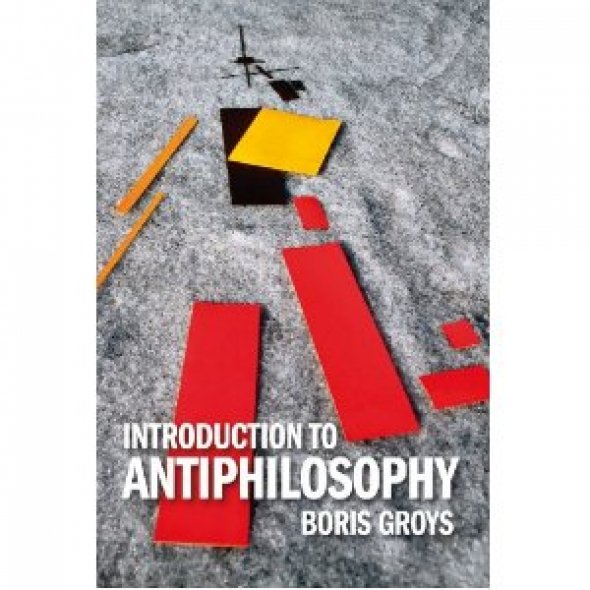Introduction to Antiphilosophy
According to the art critic and theorist Boris Groys, philosophy may have met its match in a counter-tradition of modern ‘antiphilosophy.’ Introduction to Antiphilosophy marshals such thinkers as Benjamin, Nietzsche and Derrida in an attempt to antagonise standard philosophical practice. Eleven essays explore separate figures in turn, with the project’s rationale made explicit in an extended preface and prologue.
Groys’ book begins with an inventive metaphilosophical argument. Philosophy, he claims, is conventionally characterised as a ‘pursuit of universal truth,’ purified from everyday experience. In contrast, ‘antiphilosophy’ arises to problematise such pursuits, ascribing philosophical value to events and sensations routinely encountered in the lifeworld. It insists that philosophy isn’t our sole, privileged point of access to ‘philosophical’ content, which is instead embedded in ‘ordinary practices’ like laughter (for Bakhtin) and gift-giving (Mauss), among other examples.
The originality of Groys’ approach lies in an asserted analogy between antiphilosophy and post-Duchampian ‘anti-art.’ Each disrupts a similar set of entrenched distinctions; between philosophy and life on the one hand, and art and life on the other. If Duchamp said of his readymades that they were a way of ‘denying the possibility of defining art,’ then antiphilosophy, too, denies philosophy its definition. Just as found objects flaunt their lack of ‘intrinsic’ aesthetic value, antiphilosophy deflates the notion that truth is an ‘inner quality’ of philosophical discourse, recasting it as commonplace and contingent. Hence Groys reads Heidegger, McLuhan and others as ‘readymade philosophers, by analogy with readymade artists.’
The book’s chapters were previously published as separate essays, and some of them fail to flesh out the preface’s promise. However, Groys gives a compelling case study of Kierkegaard, whose contribution to antiphilosophy consists of his calling attention to ‘the commonplaceness of the figure of Christ.’ For Kierkegaard, Christ’s significance lies in his looking like an ordinary man, such that a leap of faith is required to regard him as Christ. Groys likens this leap to ‘the readymade procedure… in which an artist declares an object from a mass-produced series to be an individual artwork.’ Both acts accomplish a sacralisation of commonplace objects, which are reconceived as containers of unverifiable value. So, Kierkegaard’s ‘readymade’ model of Christ is antiphilosophical insofar as it makes any man in the crowd ‘a legitimate object of philosophical reflection,’ where such reflection is irresolvable into ‘proof.’
At the time of putting the book together, Groys admits having been ‘unaware’ of Alain Badiou’s account of antiphilosophy. Badiou’s suggested tradition shares several names with that of Groys. But in Badiou the ‘antiphilosophical’ aspects of Kierkegaard, Nietzsche and others are valorised negatively, not positively. Like Groys, Badiou notes that ‘the antiphilosophical act consists in letting “what there is” be manifested… the real paradigm of which is art.’ Yet he avers that this overruling of propositional truth is precisely what a properly ‘systematic’ philosophy must be ‘on guard’ against. The crucial question, which can’t be resolved without dialogue between these two thinkers, is whether antiphilosophy’s privileging of particularity over ‘truth’ really is a radical act, or whether, as Bruno Bosteels has argued, it only ‘fills in for a missing emancipatory articulation.’
Info
Boris Groys, Introduction to Antiphilosophy, Verso, 2012
References
Badiou, Alain, Wittgenstein’s Antiphilosophy, Verso, 2011
Bosteels, Bruno, ‘Radical Antiphilosophy’, Filozofski vestnik, 29:2, 2008
Mute Books Orders
For Mute Books distribution contact Anagram Books
contact@anagrambooks.com
For online purchases visit anagrambooks.com







